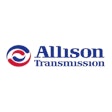The North American Council for Freight Efficiency (NACFE) and Carbon War Room last Tuesday released its newest Trucking Efficiency Confidence Report, its 13th overall, on low-viscosity oil, and how it can contribute to efficiency in medium- and heavy-duty trucks.
Though industry adoption rates for low-viscosity oil currently sits at just 20 percent, Trucking Efficiency says adoption among some of nation’s most efficiency-conscious fleets is closer to 40 percent.
And Tuesday’s Confidence Report shows those fleets’ decisions as valuable.
Study results show that Class 8 over-the-road fleets can realistically expect fuel savings in the range of 0.5 to 1.5 percent when switching from 15W-40 to 5W/10W-30 engine oil, whether the currently available CJ-4 class or the new CK-4 class available in December 2016. The savings from switching to the fuel-efficient FA-4 variant, available after December 2016, is expected to be 0.4 percent to 0.7 percent when compared to CJ-4/CK-4 5W/10W-30 oils.
And while those numbers appear modest relative to other technologies, Trucking Efficiency says “this is one of the rare instances where an efficiency technology can be implemented across the entire fleet very quickly, does not require an upfront investment, and does not require any changes in operation or maintenance practices.”
“The arrival of the new categories will help raise awareness of the fuel efficiency benefits of the large range of oils available,” adds Mike Roeth, operation lead at Trucking Efficiency at executive director at NACFE.
The Confidence Report also states that all major North American engine OEMs have approved 5W/10W-30 engine oil for over-the-road applications, and that approved oils, regardless of viscosity, meet the engine manufacturer’s requirements for engine protection. The report also concluded that within the same viscosity grade, the base stock (mineral, synthetic, or synthetic blend) does not directly affect fuel consumption.
“It’s really the high-temp, high-shear viscosity grade oils that really lead fleets to the efficiency gains,” Roeth says.
“Lower viscosity engine oils delivery fuel savings, and concerns over lower engine protection are simply not valid anymore,” adds Yunsu Park, NACFE study manager. “What makes an oil work and not work is more than just viscosity.”
Trucking Efficiency says its “recommends that fleets currently using 15W-4o engine oil consult with their engine supplier(s) to identify approved 5W/10W-30 oils for their vehicles. They should then work with their oil supplier to find an acceptable ROI of cost vs. fuel savings, with a conservative assumption for fuel-economy improvement.”
“Trucking Efficiency is highly confident that all fleets should consider switching from a 15W-40 engine oil to one with lower-viscosity,” the Confidence Report says.
To read an executive summary of the Confidence Report, please CLICK HERE.
To access this or any Trucking Efficiency Confidence Report, please CLICK HERE.











